Compression Stockings Ottawa
Free parking and Wheelchair Accessible
What are Compression Stockings?
Compression stockings are special socks or stockings that are designed to apply pressure to the legs in order to improve blood flow and reduce swelling. They are often used to treat conditions such as varicose veins, deep vein thrombosis, and lymphedema, but can also be helpful to individuals whose occupation requires long periods of sitting or standing.
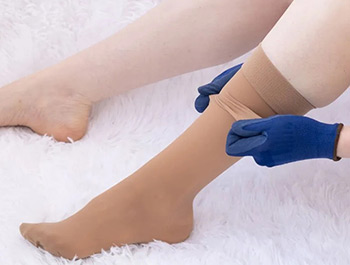
Compression garments come in various levels of compression. Mild compression stockings (8-15 mmHg and 15-20mmHg) can be purchased over-the-counter, but a doctor’s prescription will be required for higher levels of compression. They also come in different materials, shapes, sizes and colors.
It is important to match the size of the stocking to your legs as closely as possible for effective compression and circulation support. To ensure this, measuring the circumference at various points and the length of each leg is paramount. These measurements are most accurate first thing in the morning, as your legs may swell throughout the day.
Individuals who come to Footopia looking for compression stockings are highly recommended to have an ultrasound circulation assessment done to rule out any contraindications.
To learn more about the importance of circulation assessments, click here
Types of compression stockings:
8-15mmHg and 15-20mmHg are the mildest levels of compression, and can be purchased without prescription. These over-the-counter stockings are the best choice for:
Compression of 20-30mmHg and above requires a prescription from a doctor. This level of compression is mostly prescribed for:
30-40mmHg is mostly used to treat or manage more serious issues:
40mmHg and higher provide considerable compression, and is only used for severe venous disorders or lymphedema:
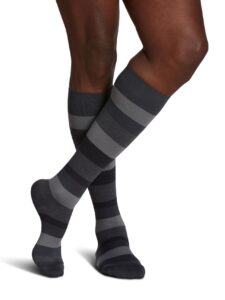
Calf-length is the most common type of compression stockings. They stop below the knee, just below the curvature of your calf. They are more easy to wear on and off, and are usually recommended for mild leg fatigue and swelling at the lower compression levels.
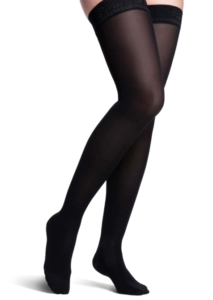 Thigh-length compression stockings cover the entirety of the leg, stopping right below the buttock fold.
Thigh-length compression stockings cover the entirety of the leg, stopping right below the buttock fold.
This length is often prescribed for venous insufficiency and chronic leg swelling, as well as for pregnancy.
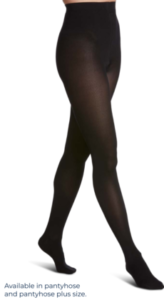 Pantyhoses and men’s leotards have both legs connected by a torso portion. They are able to bring swelling up and out of your legs through your hips. This is a key distinction between waist high and thigh high compression stockings. For women, maternity (or plus size) pantyhose have a highly expandable belly portion.
Pantyhoses and men’s leotards have both legs connected by a torso portion. They are able to bring swelling up and out of your legs through your hips. This is a key distinction between waist high and thigh high compression stockings. For women, maternity (or plus size) pantyhose have a highly expandable belly portion.
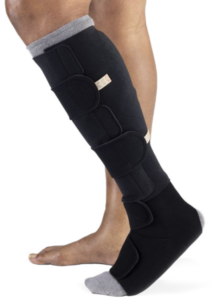 Wraps are specialty compression garments that offer adjustable pressure. They can be very useful for medically complex edema, and for the management of conditions impacting the lymphatic and venous circulatory systems.
Wraps are specialty compression garments that offer adjustable pressure. They can be very useful for medically complex edema, and for the management of conditions impacting the lymphatic and venous circulatory systems.
Out of all types of compression garments, wraps are the most easy to put on, and are ideal for people with fragile or broken skin.


